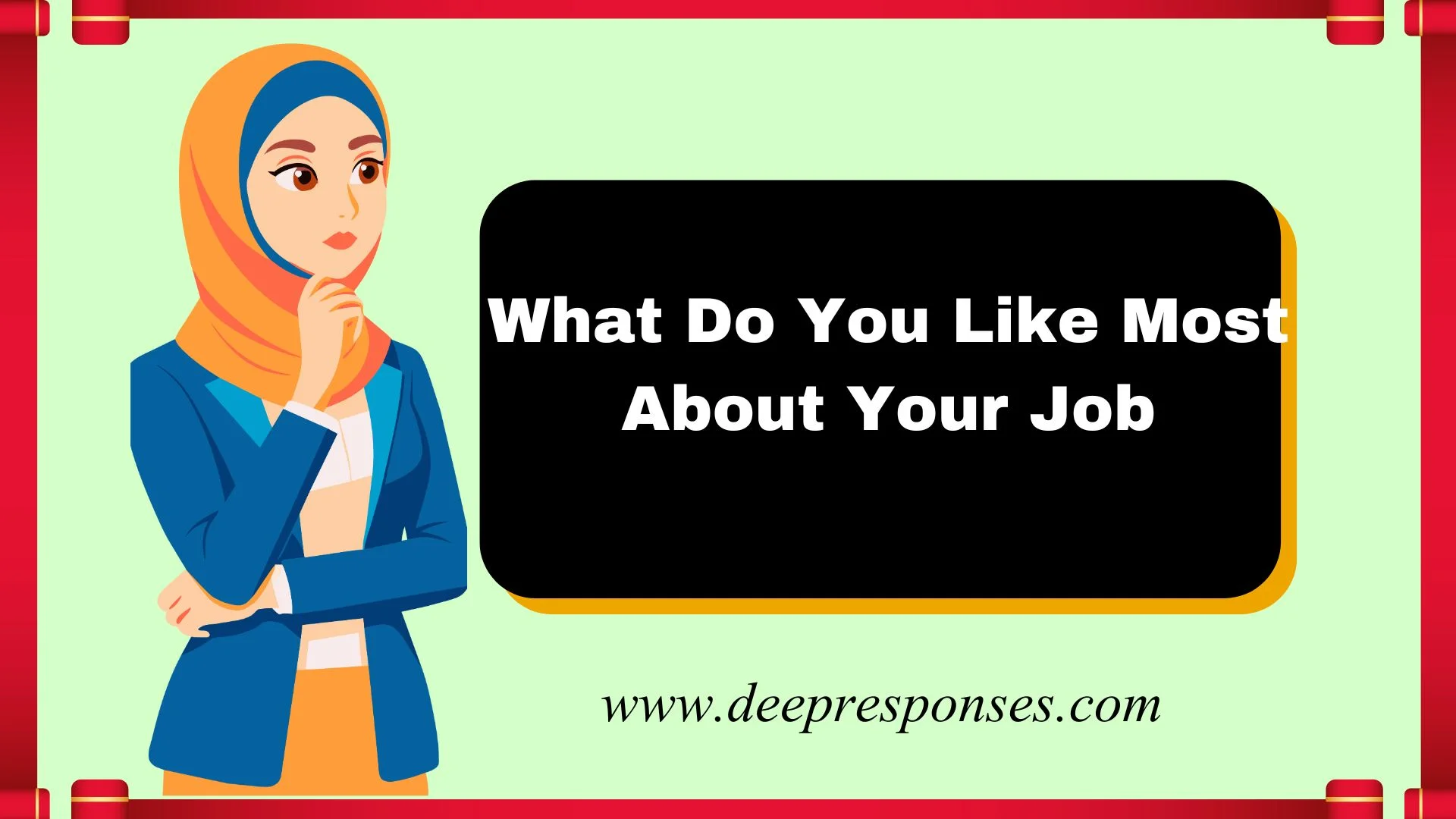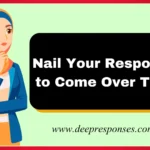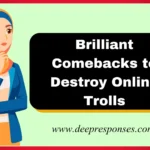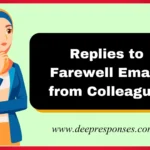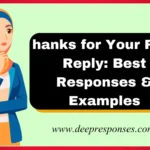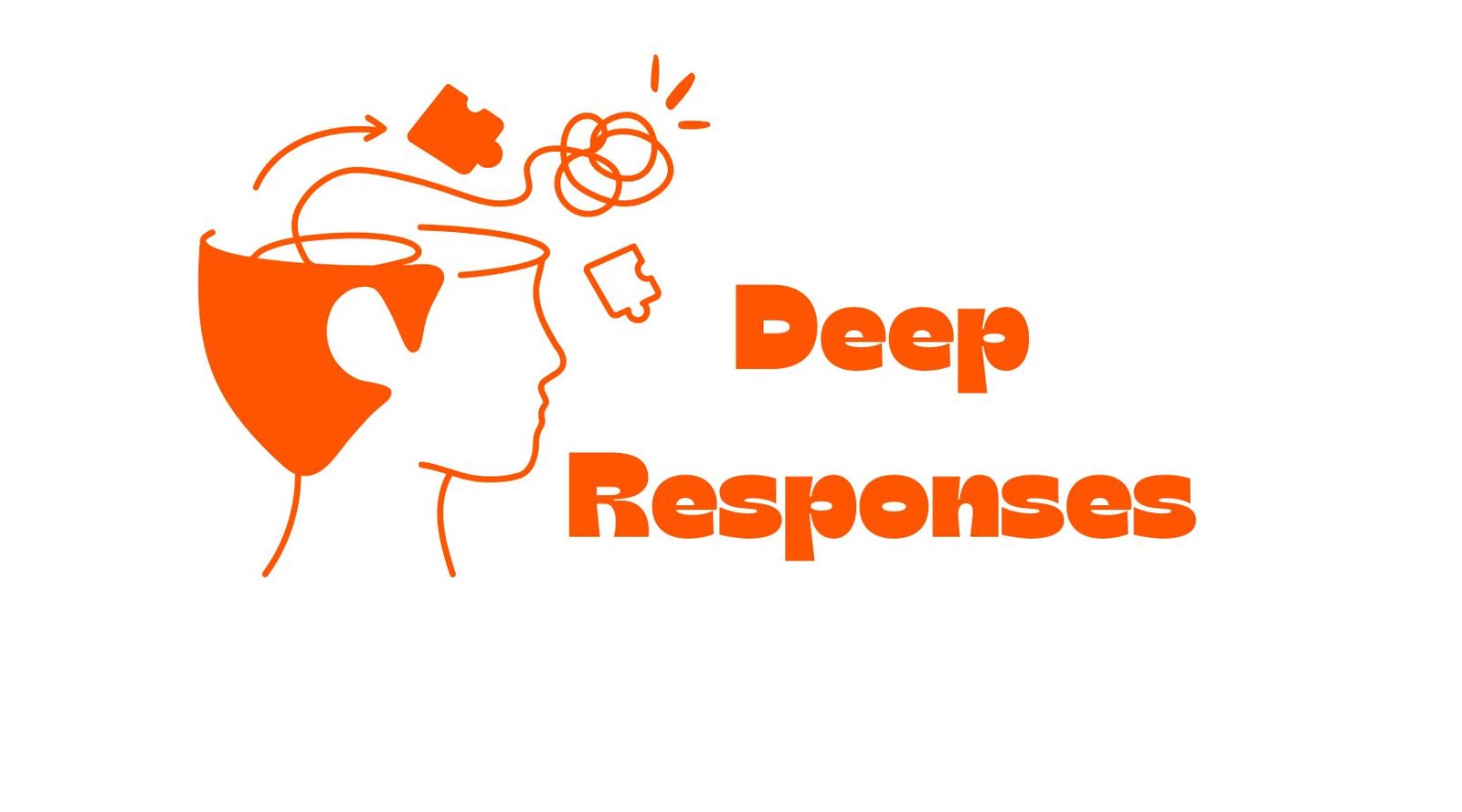When someone asks, “What do you like most about your job?”, it’s more than just small talk—it’s a chance to share your passions, values, and experiences in a positive light. Whether the question comes up in an interview, a casual conversation, or at work, the way you answer reflects your personality and outlook.
The best responses highlight aspects that show enthusiasm, gratitude, and purpose. You might focus on the skills you enjoy using, the people you work with, opportunities for growth, or the satisfaction of making a difference. Even if your job isn’t perfect, you can frame your answer in a way that feels genuine yet optimistic.
In this section, we’ll explore different ways to respond to “What do you like most about your job?”—from professional answers that impress employers to casual replies that keep conversations engaging. With the right words, you can express yourself clearly while leaving a positive impression.
Professional Growth Opportunities
- The chance to learn new skills and broaden expertise in my field.
- Access to workshops, training programs, and professional certifications.
- A workplace that prioritizes career development and mentorship.
- Opportunities to take on challenging projects and step outside my comfort zone.
- Regular feedback that helps refine my skills and approach.
- Support from leadership to explore new areas of interest within my role.
- Exposure to cross-departmental collaborations that expand my perspective.
- The ability to set and achieve clear, structured career goals.
- Working with knowledgeable colleagues who inspire continuous learning.
- Resources like books, courses, and webinars provided by the company.
A Positive Work Environment
- A culture of collaboration and mutual support among team members.
- Feeling appreciated and respected by colleagues and leadership.
- An open-door policy that encourages transparency and communication.
- Access to modern tools and technology that enhance productivity.
- A focus on creating an inclusive and diverse workplace.
- The freedom to share creative ideas and see them implemented.
- Regular team-building activities that foster strong relationships.
- A leadership style that values employee input and innovation.
- A workspace that feels comfortable and conducive to creativity.
- A shared sense of purpose and alignment with company goals.
Work-Life Balance
- Flexible working hours that accommodate personal responsibilities.
- The ability to work remotely or in a hybrid setup.
- Generous vacation policies that prioritize rest and rejuvenation.
- A culture that respects personal time and boundaries.
- Support for mental health through wellness programs or resources.
- Encouragement to take breaks and avoid burnout.
- A schedule that allows me to spend quality time with family and friends.
- The ability to disconnect after work hours without guilt or pressure.
- Policies that support parental leave or caregiving responsibilities.
- Understanding management that prioritizes employee well-being.
Strong Company Values
- Alignment with a mission that resonates with my personal beliefs.
- A commitment to ethical practices and corporate responsibility.
- Emphasis on sustainability and reducing environmental impact.
- A clear vision that inspires employees to contribute meaningfully.
- Support for community initiatives and charitable causes.
- A leadership team that leads by example and upholds integrity.
- Transparency in decision-making processes and communication.
- Dedication to diversity, equity, and inclusion in the workplace.
- Encouragement to innovate while staying true to core values.
- A workplace culture built on trust, respect, and accountability.
Meaningful Work
- Feeling that my work positively impacts others or the community.
- Knowing that my contributions make a difference in achieving company goals.
- Working on projects that align with my personal passions and interests.
- Seeing tangible results from the efforts I put into my work.
- Opportunities to solve real-world problems creatively.
- Collaborating with a team that values meaningful contributions.
- A sense of pride in the products or services my company offers.
- Being part of a company that values purpose over profit.
- The ability to innovate and create solutions that matter.
- A role that challenges me intellectually and emotionally.
Job Security and Stability
- A company that offers long-term job security through consistent growth.
- Clear and transparent communication about the company’s future plans.
- Strong financial health and a solid market position that ensure stability.
- Benefits and policies that promote employee retention and security.
- A leadership team that actively works to protect employees’ interests.
- Ongoing investments in technology and infrastructure to maintain competitive advantage.
- A strong reputation in the industry that builds trust in the organization.
- Policies that support job security in times of economic uncertainty.
- Clear roles and responsibilities that create stability within teams.
- A focus on sustainable growth that supports both the business and its employees.
Autonomy and Independence
- The freedom to manage my own schedule and tasks without micromanagement.
- A work culture that trusts employees to make decisions and take ownership.
- Opportunities to lead projects and initiatives on my own terms.
- Clear expectations that allow me to organize my work in a way that suits me best.
- A supportive leadership style that gives me the space to excel independently.
- The ability to work autonomously while still receiving guidance when needed.
- Encouragement to innovate and take initiative without constant oversight.
- Access to resources that allow me to make informed decisions independently.
- Flexibility in how I approach and complete my work.
- The sense of empowerment that comes from working in an autonomous environment.
Positive Relationships with Colleagues
- The ability to collaborate with talented, motivated colleagues.
- Building strong, supportive friendships with co-workers.
- A team-oriented environment that encourages mutual respect and support.
- A workplace where people are genuinely friendly and approachable.
- Open communication and a willingness to share ideas with one another.
- Celebrating successes and milestones together as a team.
- A culture that encourages helping others, whether personally or professionally.
- Mutual respect that fosters positive working relationships and team synergy.
- Opportunities to network and form lasting connections within the company.
- A strong sense of camaraderie that makes coming to work enjoyable.
Company Benefits and Perks
- Comprehensive health and wellness benefits that meet my needs.
- Competitive salary and bonus structures that reward hard work.
- Generous retirement or pension plan options that help secure my future.
- Wellness programs such as gym memberships, health screenings, and mental health support.
- Discounts on products or services, making my daily life more affordable.
- Access to life insurance, disability benefits, and other safety nets.
- Paid parental leave that supports work-life balance during life changes.
- Employee stock options or profit-sharing programs that align my success with the company’s.
- Opportunities for travel, conferences, and professional development at no extra cost.
- A workplace that offers meals, snacks, or other small perks to improve daily life.
Innovation and Creativity
- The freedom to experiment with new ideas and approaches in my work.
- A work environment that encourages creative problem-solving and innovation.
- The chance to be part of a company that values and invests in new technologies.
- Collaborating on projects that challenge conventional thinking and introduce fresh perspectives.
- The ability to share innovative ideas and see them brought to life.
- A leadership team that supports creative initiatives, regardless of the risk involved.
- Opportunities to work on products or services that push boundaries and set trends.
- A culture that celebrates creativity and rewards forward-thinking solutions.
- The resources and tools necessary to explore new ideas and implement them.
- A diverse, dynamic workplace that brings multiple creative minds together.
Recognition and Appreciation
- Regular recognition for my contributions, both big and small.
- A leadership team that acknowledges hard work and achievements.
- Public celebrations of milestones and accomplishments within the company.
- Awards and incentives for top performers that boost morale.
- A culture where positive feedback is given freely and frequently.
- Personal acknowledgment from senior leaders that makes me feel valued.
- Encouragement from colleagues through recognition programs or shout-outs.
- Opportunities to showcase my work to wider audiences within the company.
- A workplace where my efforts are recognized and rewarded appropriately.
- Feeling respected for the unique talents and perspectives I bring to the team.
Challenging and Engaging Work
- My role constantly presents new challenges that keep me engaged and excited.
- The ability to work on complex projects that require deep thinking and creativity.
- A workload that provides variety and prevents monotony.
- Opportunities to learn from overcoming obstacles and solving problems.
- The sense of accomplishment that comes from tackling difficult tasks.
- Working on projects that stretch my abilities and help me grow.
- A job that requires continuous problem-solving, keeping me intellectually stimulated.
- The excitement of working in a fast-paced, ever-changing environment.
- Regular opportunities to push my limits and see tangible results.
- A dynamic work environment that ensures every day is different from the last.
Transparency and Clear Communication
- Clear communication from management regarding company goals and objectives.
- Regular updates and transparency about company performance and changes.
- A work culture where open dialogue is encouraged at all levels.
- Honest, direct conversations that lead to better understanding and fewer misunderstandings.
- Regular team meetings that keep everyone aligned and informed.
- Clear expectations set from the outset, allowing for better planning and execution.
- A focus on transparency in decision-making processes.
- Access to leadership for any clarifications or questions I might have.
- A culture where feedback is actively sought and valued.
- Open communication channels that help resolve issues quickly and efficiently.
A Sense of Purpose
- The knowledge that my work aligns with my personal values and beliefs.
- A role that gives me the opportunity to make a meaningful impact on society.
- Working for a company whose mission I truly believe in and support.
- A sense of pride in the product or service I contribute to.
- The satisfaction of knowing that my work is part of something larger than myself.
- A company culture that prioritizes ethical practices and social responsibility.
- Helping others through my job, whether directly or indirectly.
- Being part of a team whose efforts have a tangible positive effect on the world.
- A sense of fulfillment that comes from doing work that matters to me.
- Opportunities to engage in community-building or volunteer initiatives.
Supportive Leadership
- Having leaders who genuinely care about my professional and personal well-being.
- The opportunity to receive constructive feedback that helps me improve.
- Leaders who lead by example and set a positive tone for the entire team.
- A management team that actively encourages personal and professional growth.
- Access to mentorship from senior leaders who guide and support me.
- Leadership that empowers me to make decisions and trust my judgment.
- Transparent communication from leaders about expectations and company goals.
- Recognition from leadership for both individual and team accomplishments.
- A leadership team that fosters a culture of inclusion and fairness.
- Managers who actively listen and value employee input and feedback.
Flexibility in Job Role
- The ability to shape my job description based on personal strengths and interests.
- Opportunities to take on various roles and responsibilities within the company.
- Freedom to decide how best to complete tasks while meeting company goals.
- A work environment where I can adapt my role to suit changing circumstances.
- Flexibility in adjusting to new projects, allowing me to explore new areas of the business.
- A dynamic role that allows me to apply multiple skill sets.
- Encouragement to experiment with new methods or approaches to tasks.
- The ability to shift between different projects or teams when needed.
- Working in a role that provides variety and change, keeping things exciting.
- A workplace that values the versatility and multi-tasking abilities of its employees.
Creative Problem Solving
- The chance to think outside the box and come up with innovative solutions.
- The freedom to apply creative thinking to complex challenges.
- A supportive environment where new ideas are encouraged and tested.
- Opportunities to develop unique solutions that have a real-world impact.
- Working with a team that values creativity and fresh perspectives.
- The autonomy to approach problems from multiple angles.
- A culture that celebrates innovation and the process of solving problems.
- The excitement of experimenting with different methods to find the best solution.
- Collaboration with creative minds to solve big problems and develop cutting-edge ideas.
- Opportunities to showcase creative solutions and receive recognition.
Opportunity for Impact
- A chance to make a difference by contributing to meaningful projects.
- Knowing that my work helps improve the lives of others or the community.
- The ability to influence company direction and strategies through my work.
- Feeling that my contributions are vital to the company’s success.
- The satisfaction of solving problems that impact real people or industries.
- Being involved in projects that contribute to social good or sustainability.
- The ability to leave a lasting legacy through impactful work.
- Making decisions that have a direct and positive effect on the company’s goals.
- Opportunities to volunteer or engage in charitable work through the company.
- Being part of a company that actively works to address important issues.
Also Read This: 251+ Responses to “I Miss You” That Will Melt Their Heart
Supportive Team Culture
- Working in a collaborative environment where everyone pitches in to support one another.
- A team-oriented culture where colleagues are always willing to lend a hand.
- The ability to rely on my teammates for advice and assistance when needed.
- A workplace where success is celebrated as a group effort.
- The camaraderie and bonds formed while working together toward shared goals.
- The knowledge that I am part of a team that respects and values my input.
- A team that encourages open communication and idea sharing.
- Regular team-building exercises that strengthen trust and morale.
- A collaborative spirit that makes even challenging tasks enjoyable.
- Working in an environment where teamwork is essential to achieving goals.
Job Variety and Excitement
- The chance to engage in a variety of projects that prevent monotony.
- A job that offers new tasks and challenges regularly, keeping me on my toes.
- The ability to rotate between different responsibilities or departments.
- A dynamic role that keeps things fresh and exciting every day.
- Exposure to diverse areas of the business, keeping my work interesting.
- A workplace that encourages cross-functional collaboration for variety.
- Working on projects with different teams that offer a new perspective.
- The ability to switch between creative, strategic, and technical tasks.
- Regularly being involved in new, exciting projects that spark interest.
- A role that doesn’t get stagnant, constantly offering new challenges.
Recognition of Effort
- A culture where hard work is celebrated and appreciated.
- Regular feedback that acknowledges and rewards effort and dedication.
- A company that makes an effort to highlight and honor employees’ achievements.
- The satisfaction of knowing my work has been noticed and valued.
- Public acknowledgment of my contributions during team meetings or company events.
- The opportunity to earn rewards or bonuses based on performance.
- Positive reinforcement from leadership and colleagues that boosts morale.
- A workplace where accomplishments are celebrated as team successes.
- Recognition programs that reward employees for going above and beyond.
- Being recognized for the unique skills and value I bring to the team.
Positive Work Relationships
- Building friendships and bonds that go beyond just professional interactions.
- A work environment where colleagues are friendly and approachable.
- The opportunity to work closely with people who share similar values.
- A positive atmosphere that promotes mutual respect and understanding.
- Strong interpersonal connections with colleagues that make work enjoyable.
- Collaborative work styles that make everyday tasks more fulfilling.
- A sense of belonging in a workplace where everyone supports one another.
- The satisfaction of knowing I’m part of a team that genuinely cares about each other.
- Team activities that strengthen relationships and create lasting friendships.
- The encouragement to connect with colleagues in and outside of work.
Innovative Tools and Technology
- Access to cutting-edge tools that make my job easier and more efficient.
- The ability to work with the latest technology that enhances productivity.
- A company that invests in state-of-the-art software and equipment.
- The excitement of using advanced tools to solve complex problems.
- Having the resources necessary to stay competitive and innovative in my field.
- The satisfaction of working in an environment that encourages the use of new technology.
- A workspace that offers the latest devices and tech gadgets.
- Tools that allow for more creativity and collaboration across teams.
- The opportunity to learn and implement the newest industry tools.
- The ability to work with technology that supports my professional growth.
Trust and Autonomy in Decision Making
- The confidence that management trusts me to make decisions in my role.
- Autonomy to make independent choices regarding how to execute tasks.
- A leadership style that empowers employees to make decisions and lead initiatives.
- The ability to influence processes and outcomes through personal judgment.
- A company that values individual contributions and the freedom to make decisions.
- The trust placed in me to manage my time and workload independently.
- The ability to take ownership of projects and lead them to completion.
- Encouragement to take the initiative and make decisions without constant supervision.
- The empowerment to make key decisions that affect both my work and the team.
- A work culture that places value on independent thought and decision-making.
A Fun and Engaging Workplace
- A work environment where fun is encouraged alongside productivity.
- Regular social events, parties, and gatherings that strengthen team spirit.
- The opportunity to express my personality and creativity in my work.
- A relaxed atmosphere where employees can enjoy their time at work.
- A company that celebrates achievements in fun and engaging ways.
- Working in an office that has a vibrant, energetic, and positive environment.
- A culture where laughter and humor are part of everyday life.
- Fun and engaging activities, like games or outings, that help reduce stress.
- A workplace that values work-life balance, making it enjoyable to be at work.
- The opportunity to have fun while also being productive and achieving goals.
Understanding the Context Behind “See You Soon”
“See you soon” is a common phrase used when people part ways. It’s often said casually but carries an underlying message of expectation for a future meeting. While it’s a phrase most of us use daily, its tone and meaning can shift depending on the context, the relationship between the people involved, and the situation at hand. Understanding the depth behind “See you soon” allows for more thoughtful responses and engagement in different scenarios.
Understanding the Context Behind “See You Soon”
- Casual and Familiar Settings
In casual conversations, “See you soon” is often used among friends, family, or colleagues. It’s a simple, informal farewell with an unspoken understanding that you’ll reconnect at some point in the near future. The phrase indicates a positive expectation of seeing the person again, but doesn’t necessarily mean an exact date or time is set. It’s a casual gesture of goodwill that implies a continuing connection. - Workplace and Professional Interactions
In a professional environment, “See you soon” may still be casual, but it can carry a different tone. It could imply a meeting scheduled in the near future or be a polite parting comment after a productive conversation. Context matters here, as saying it in a meeting with a colleague or client could suggest upcoming collaborations or future communications. It’s important to gauge the tone to ensure the appropriate response is given. - Parting in Social or Emotional Contexts
When said in more emotional or personal contexts, “See you soon” might express a deeper connection or a sentiment of missing someone. It can be used to comfort others, signaling the anticipation of reuniting after a temporary separation. This form of the phrase carries warmth and an understanding that time apart will be short-lived, strengthening bonds in personal relationships.
Responding to “See You Soon” in Different Scenarios
- In Casual Conversations
When someone says “See you soon” in a casual conversation, a friendly and positive response is key. A simple “See you soon” back, or “Take care” can work well in such scenarios, conveying warmth and mutual understanding. It’s a casual acknowledgment of the parting, and it often doesn’t require a lot of elaboration. - In Professional Settings
In professional settings, the response should be polite and respectful. A response like “Looking forward to it” or “Until then” signals professionalism while maintaining a friendly tone. Depending on the context, you might also acknowledge the next steps, such as “I’ll email you the details soon” if a project or discussion is involved. - In Emotional or Personal Contexts
In more intimate settings, a heartfelt response is appropriate. You might say, “I’ll miss you, but can’t wait to see you again” or “Take care, I’m looking forward to our next hangout.” This kind of response helps convey the emotional bond you share with the person and expresses your eagerness to reunite soon.
Alternative Phrases to Use Instead of “See You Soon”
- “Catch You Later”
A casual, informal phrase often used in friendly situations. It conveys the same idea as “See you soon” but can be a little more laid-back, making it great for younger audiences or casual settings. - “Talk to You Later”
Ideal for scenarios where communication will continue, even if in a different format. This phrase can be used when leaving a conversation with the understanding that there will be follow-up communication, such as a phone call or text message. - “Until Next Time”
This phrase is great for situations where you may not know exactly when you’ll meet again but want to leave with a positive, hopeful tone. It suggests a desire to reconnect, without putting pressure on any specific time frame.
Non-Verbal Communication Matters
Non-verbal communication plays a significant role in how your response to “See you soon” is perceived. Body language, eye contact, tone of voice, and facial expressions can convey warmth, sincerity, and anticipation of the next meeting. Whether you offer a smile, a wave, or a friendly gesture, these non-verbal cues often speak louder than words. A genuine response, paired with appropriate non-verbal cues, can enhance your message and strengthen relationships.
Mistakes to Avoid When Responding to “See You Soon”
- Being Dismissive or Rushed
Avoid responding in a way that makes it seem like you’re uninterested or in a hurry to leave. Responses like “Okay, bye” or “Yeah, whatever” can come off as rude or disengaged. Always aim to sound positive and engaged. - Overcommitting to a Specific Time
It’s important not to promise something that you can’t deliver when responding to “See you soon.” If you’re uncertain when you’ll next meet, it’s better to respond with a general but warm phrase, such as “Looking forward to it” or “Until then.” - Being Too Formal in Casual Situations
If someone says “See you soon” in a casual context, responding with an overly formal phrase like “I look forward to our next meeting” might seem out of place. Stick to a response that matches the tone of the conversation to maintain comfort and familiarity.
Why It’s Important to Personalize Your Response
Personalizing your response shows that you care and have put thought into your interaction. Instead of simply repeating the phrase, tailoring your response to the context of the conversation can strengthen your relationship with the person. Personalization can be as simple as acknowledging the specifics of your next meeting or incorporating a sentiment that matches your relationship, such as “Take care, can’t wait to catch up!”
Conclusion
Responding to “See you soon” is an art in itself—it reflects the nature of your relationship with the other person and the context of your parting. By understanding its deeper meaning and responding thoughtfully, you show that you’re engaged, respectful, and ready for future interactions. Whether in casual, professional, or emotional situations, the right response can strengthen bonds and enhance communication
FAQs
Q: How should I respond to “See you soon” in a professional setting?
A: In a professional setting, a simple “Looking forward to it” or “Until then” works well. It keeps the response polite and respectful while conveying positivity.
Q: What’s the best response to “See you soon” in a casual situation?
A: In a casual setting, you can respond with something like “See you later” or “Take care!” to keep the tone light and friendly.
Q: How do I respond to “See you soon” in an emotional context?
A: A more heartfelt response like “I’ll miss you, but I can’t wait to see you again” helps convey your emotional connection.
Q: Is it necessary to personalize my response to “See you soon”?
A: Personalizing your response can make the interaction feel more sincere and meaningful, especially in closer relationships or more emotionally charged moments.
Q: Are there any mistakes to avoid when responding to “See you soon”?
A: Avoid being dismissive, overcommitting to specific plans, or using an overly formal response in casual situations. It’s best to match your tone to the context.
